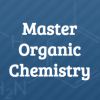We’ve learned about molecules with single bonds. We’ve learned about molecules with double bonds. We both know what comes next. The last major category of molecules we’re going to learn about in this course, the alkynes. Alkynes are any molecules that feature a triple bond. In a alkyne featuring only carbons and hydrogens, there will be n-2 hydrogen atoms, with n being the number of carbon atoms.
Of course, since we’re learning about a new category of molecule, there are going to be some new rules associated with naming. Luckily, learning these rules won’t be too different than learning the alkene naming rules.
Of course, the first thing you should learn is nomenclature. This shouldn’t take too long because of its similarity to alkene nomenclature, with only minor variations. Next up, you’ve got to learn new reactions because there are some reactions that are unique to alkynes. Make sure you understand electrophilic addition and hydroboration- oxidation and reduction. Finally, when doing NMRs involving alkynes, there’s a slight difference. Since the triple bond is so short, interactions between Hydrogen atoms can break the 3-bond rule. Basically, when counting bonds, don’t even count the triple bond as a bond because of the short distance- the hydrogens can interact up to four bonds away if one of those bonds is a triple bond.







